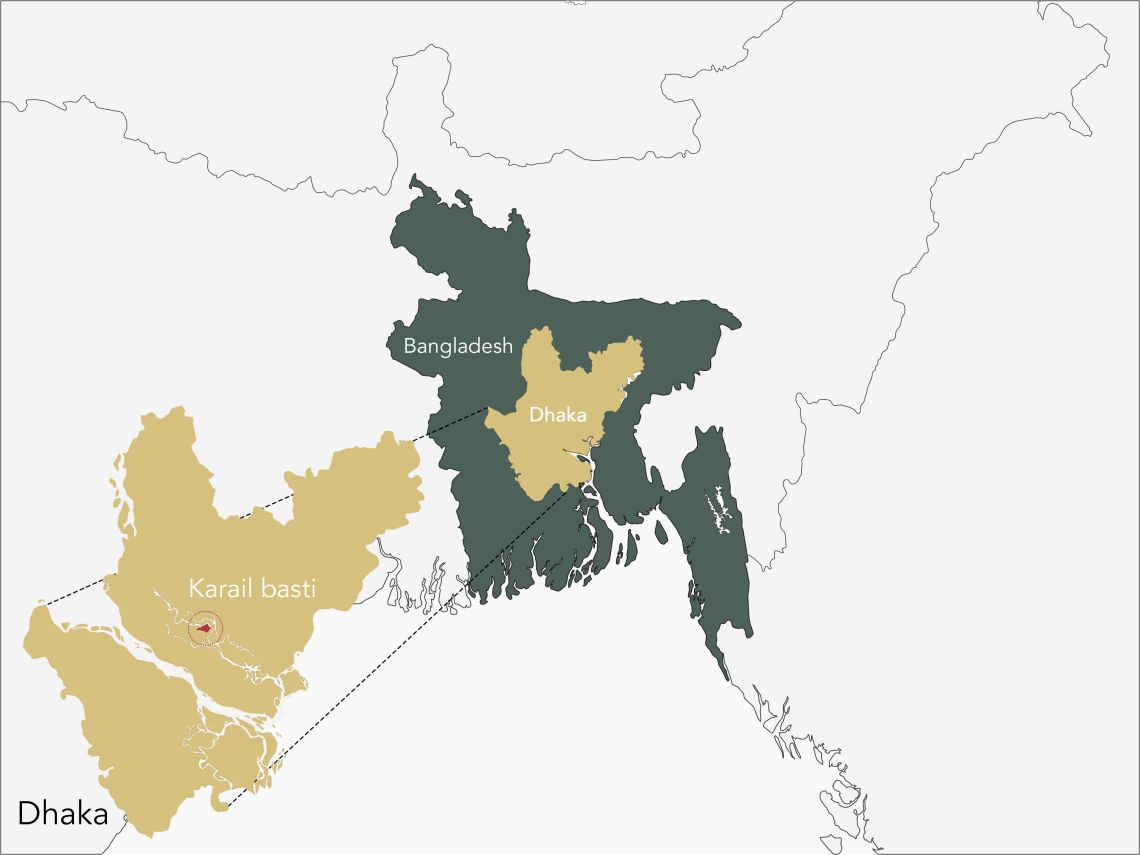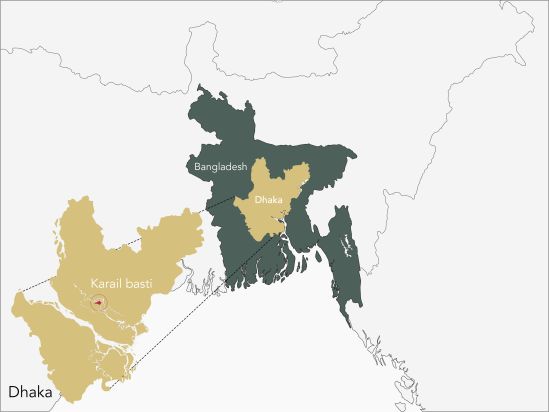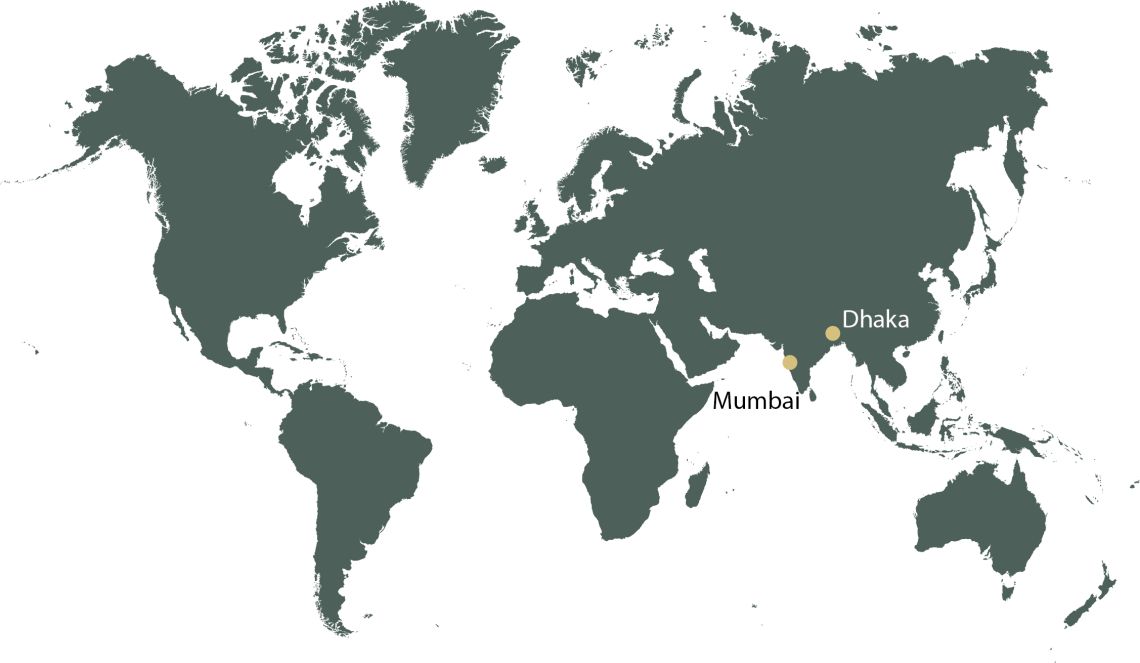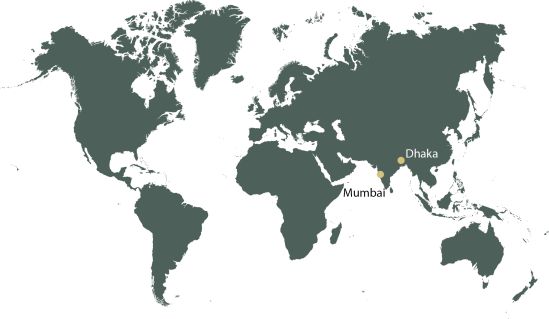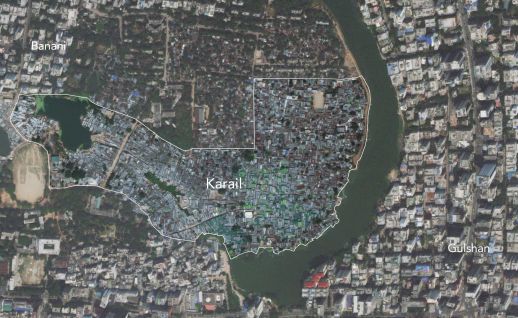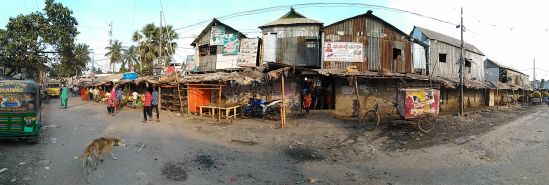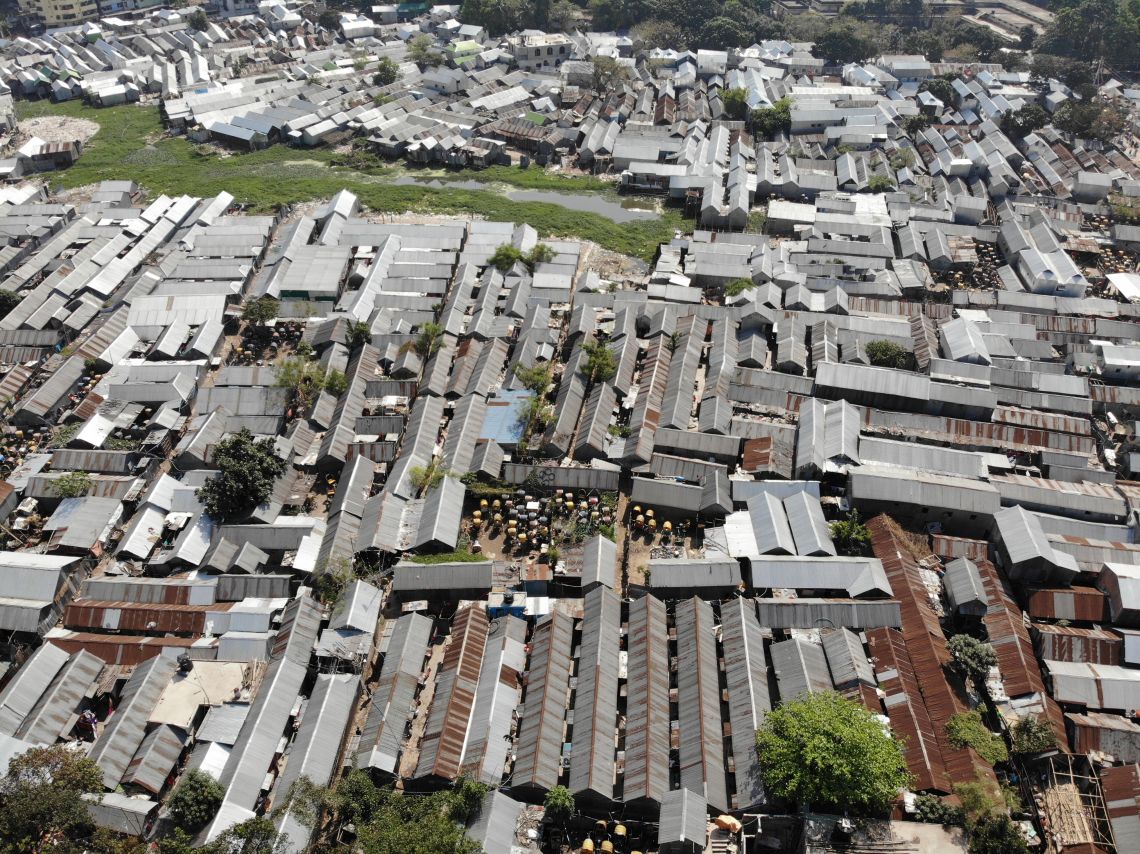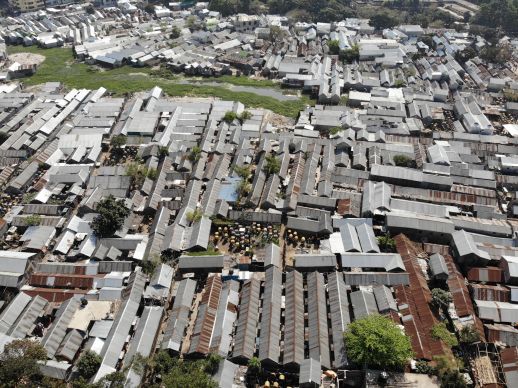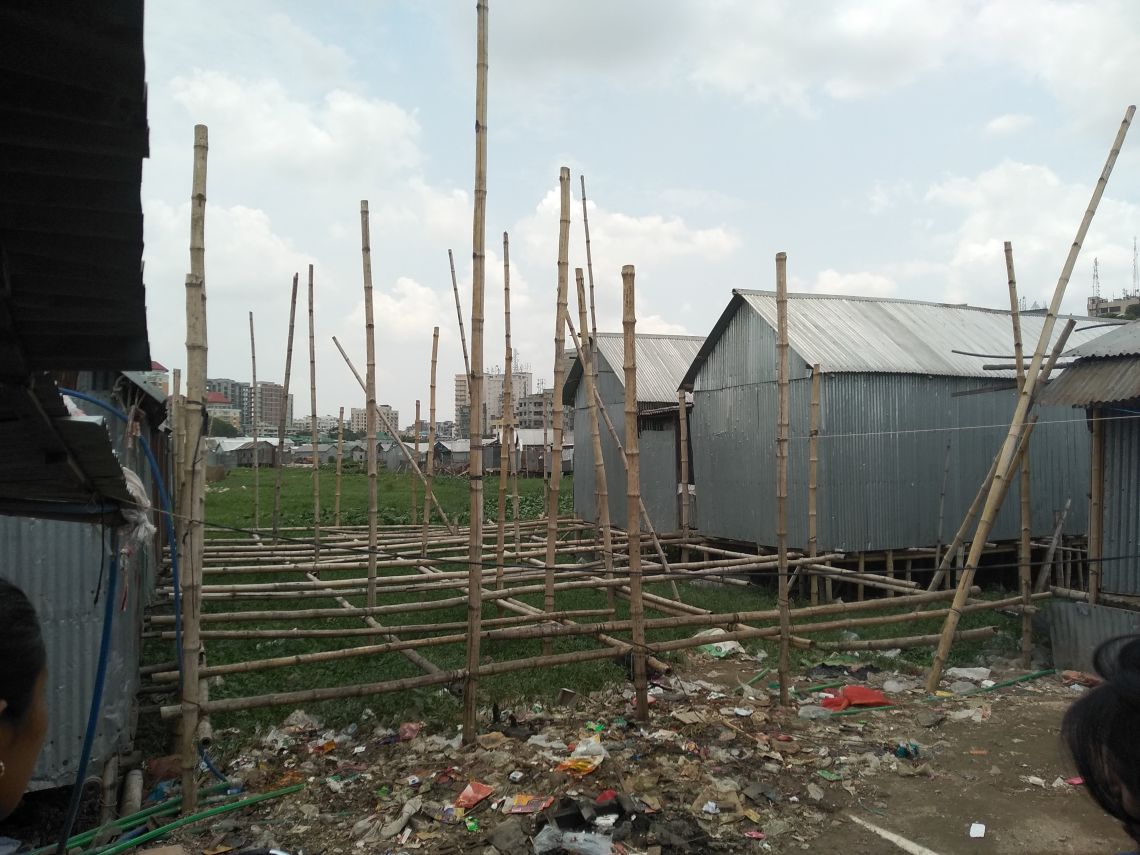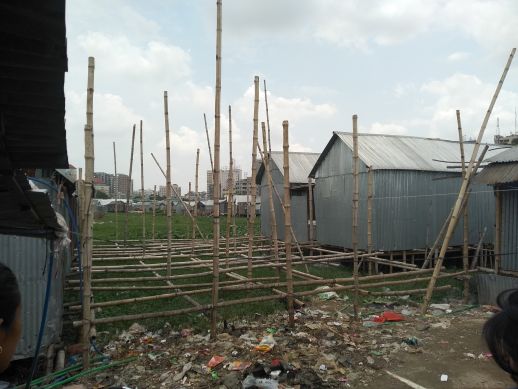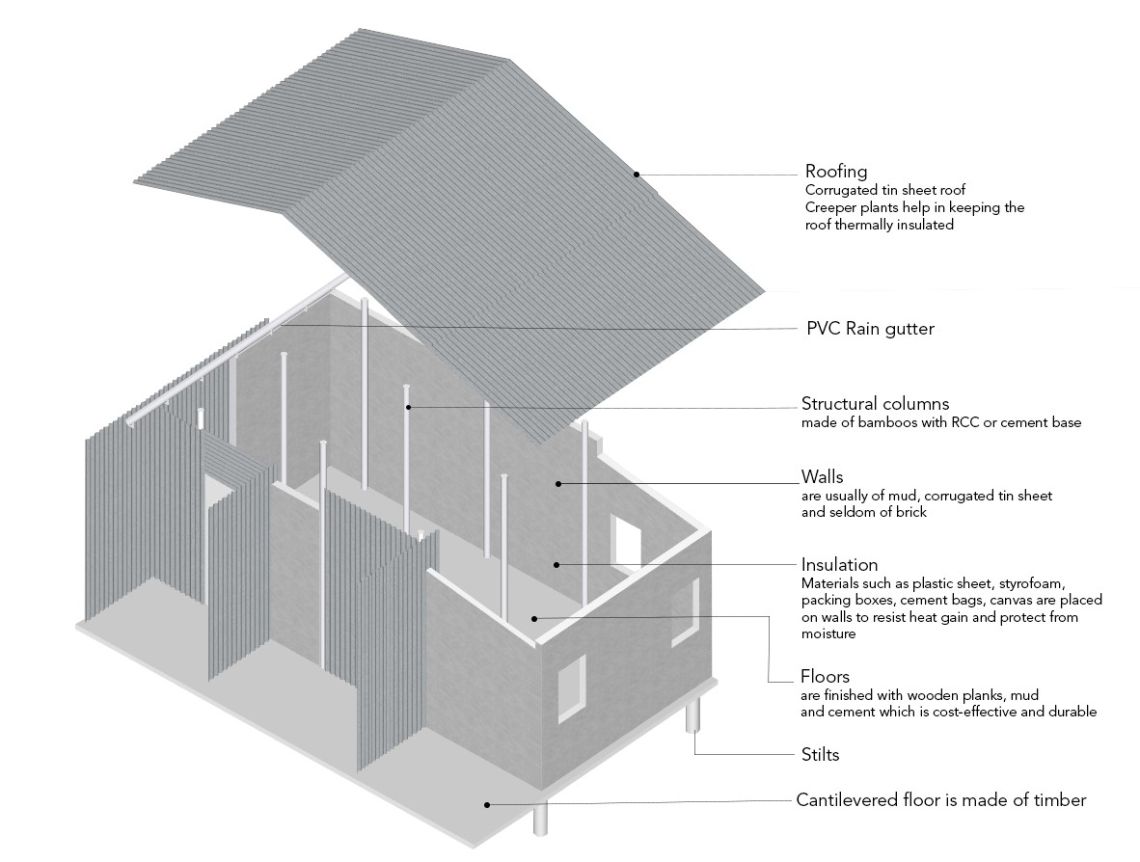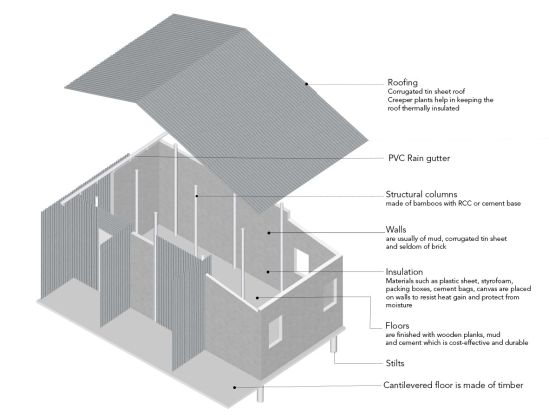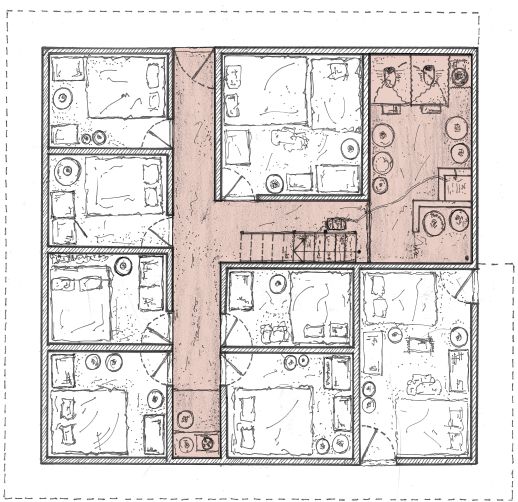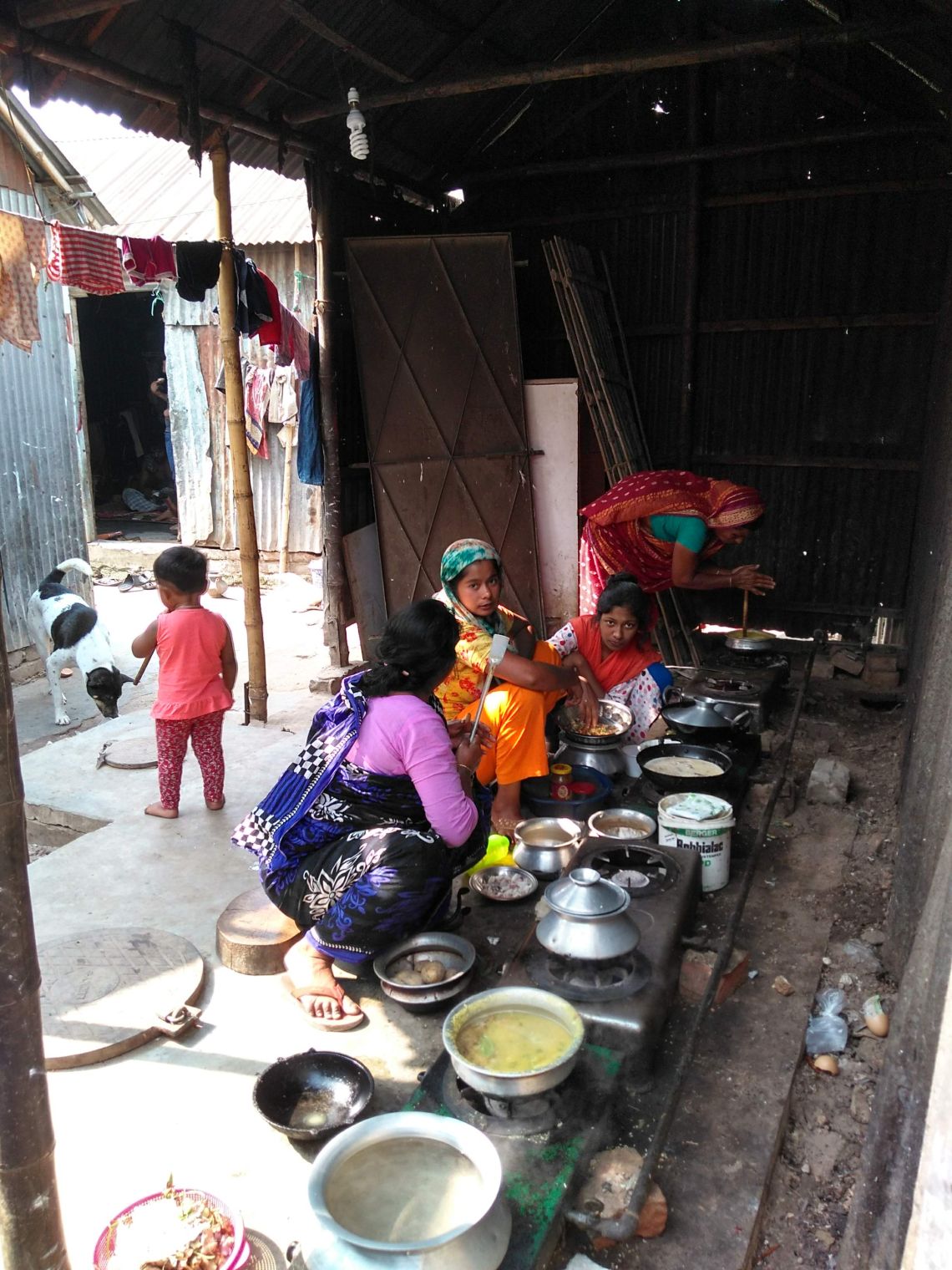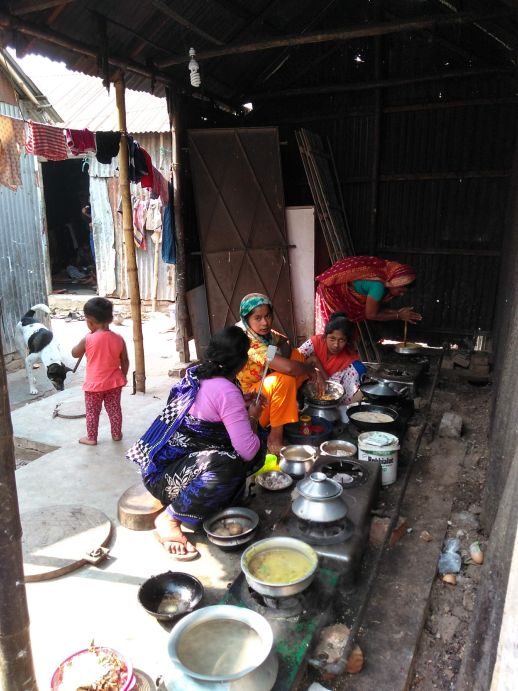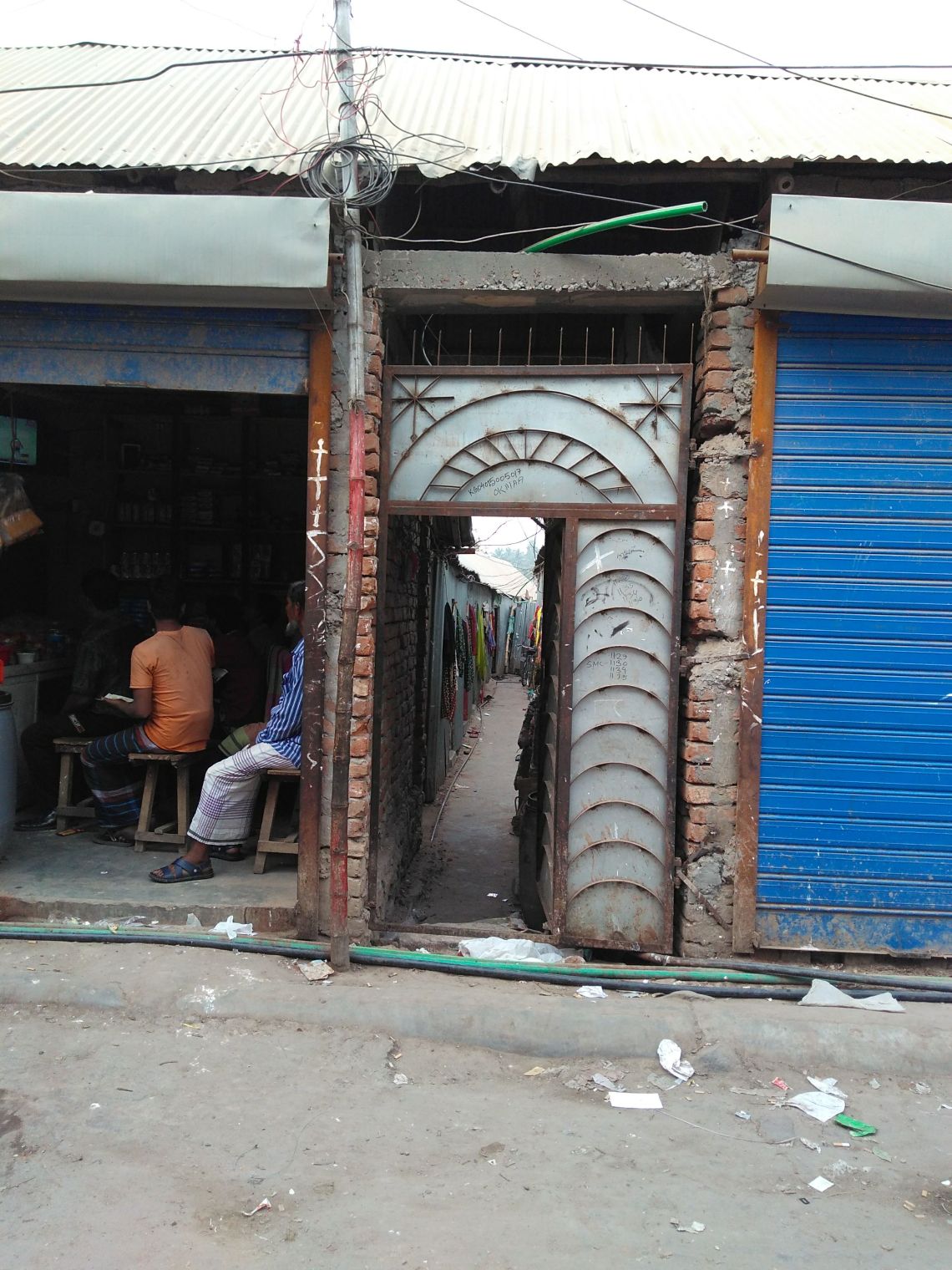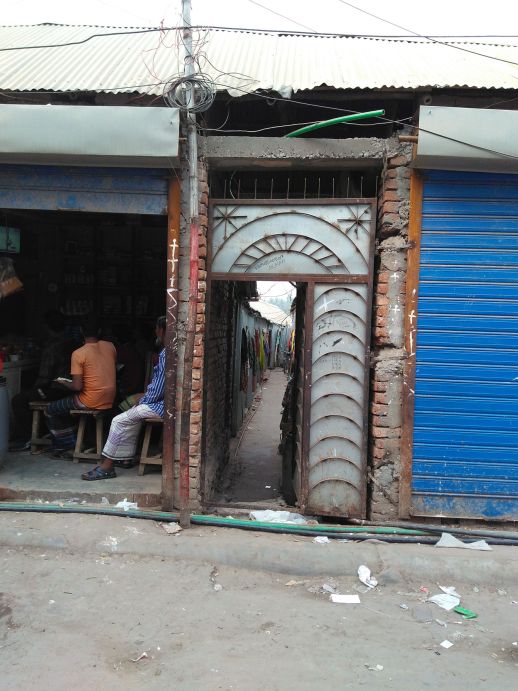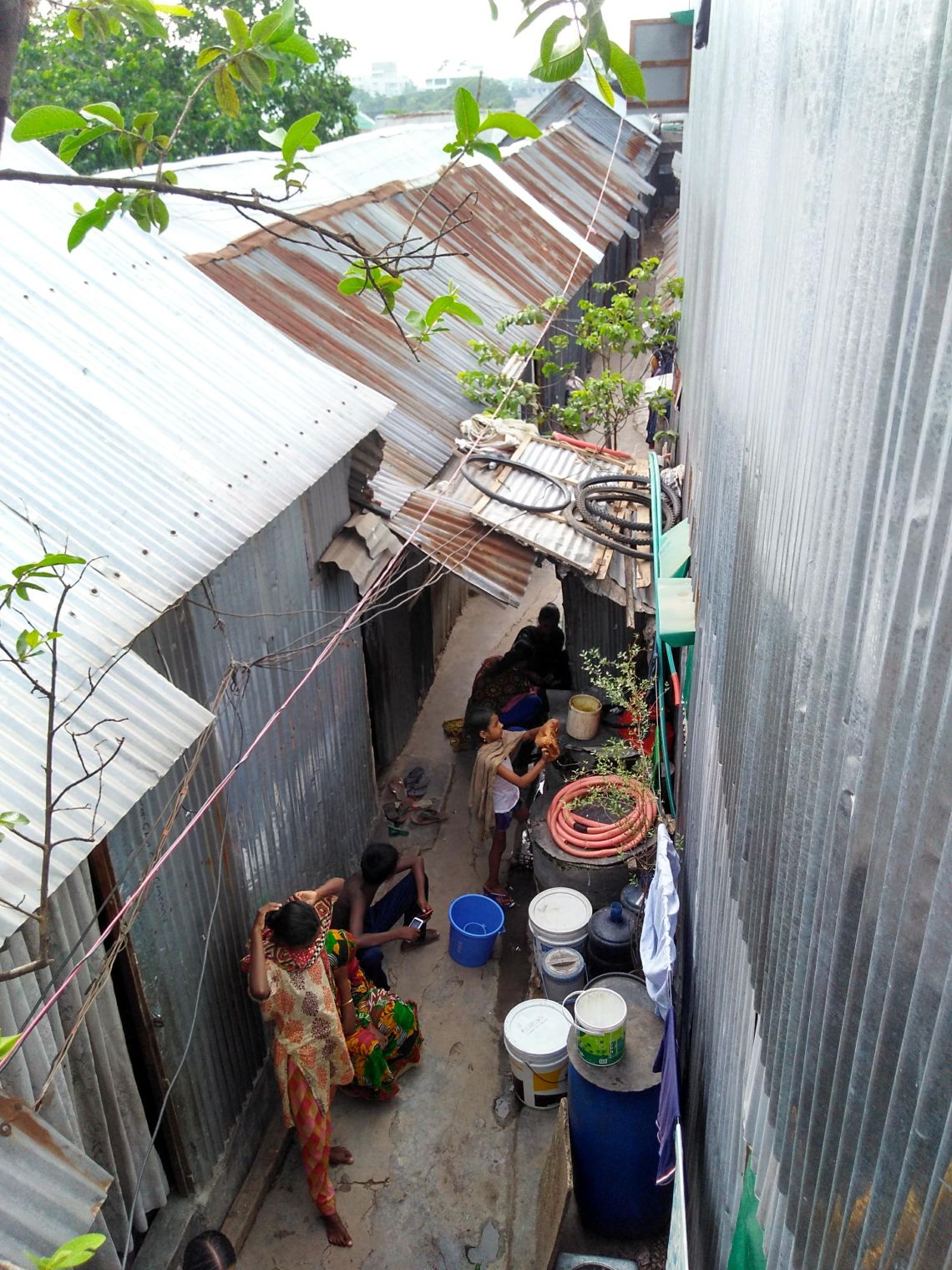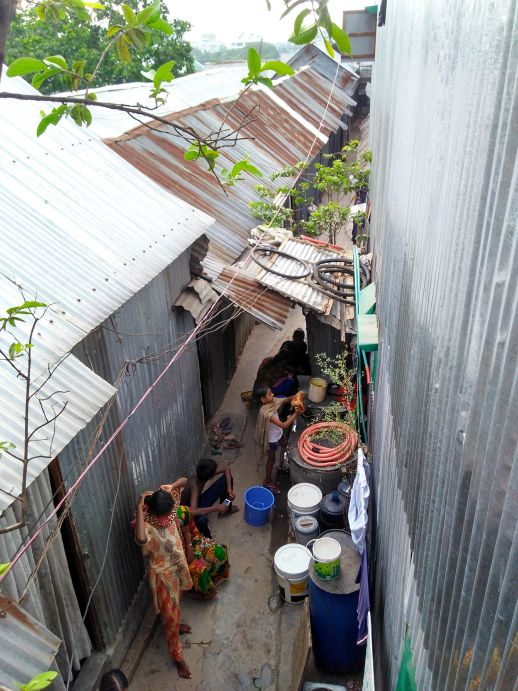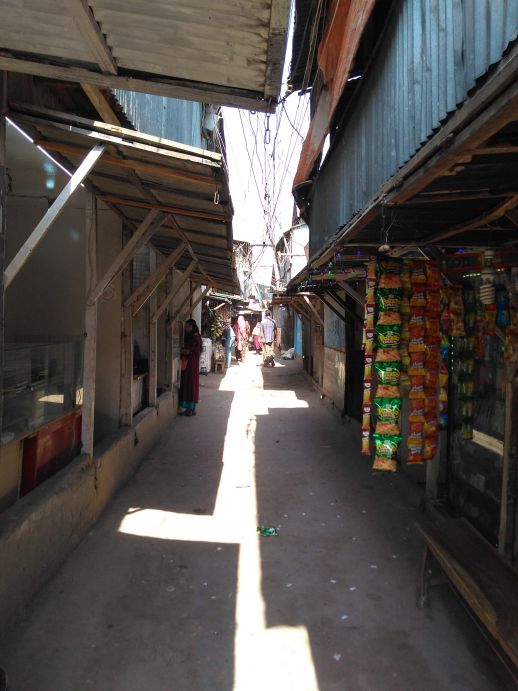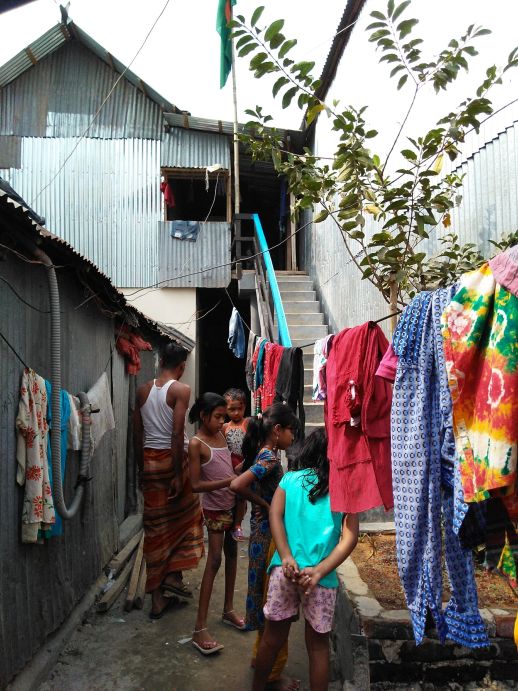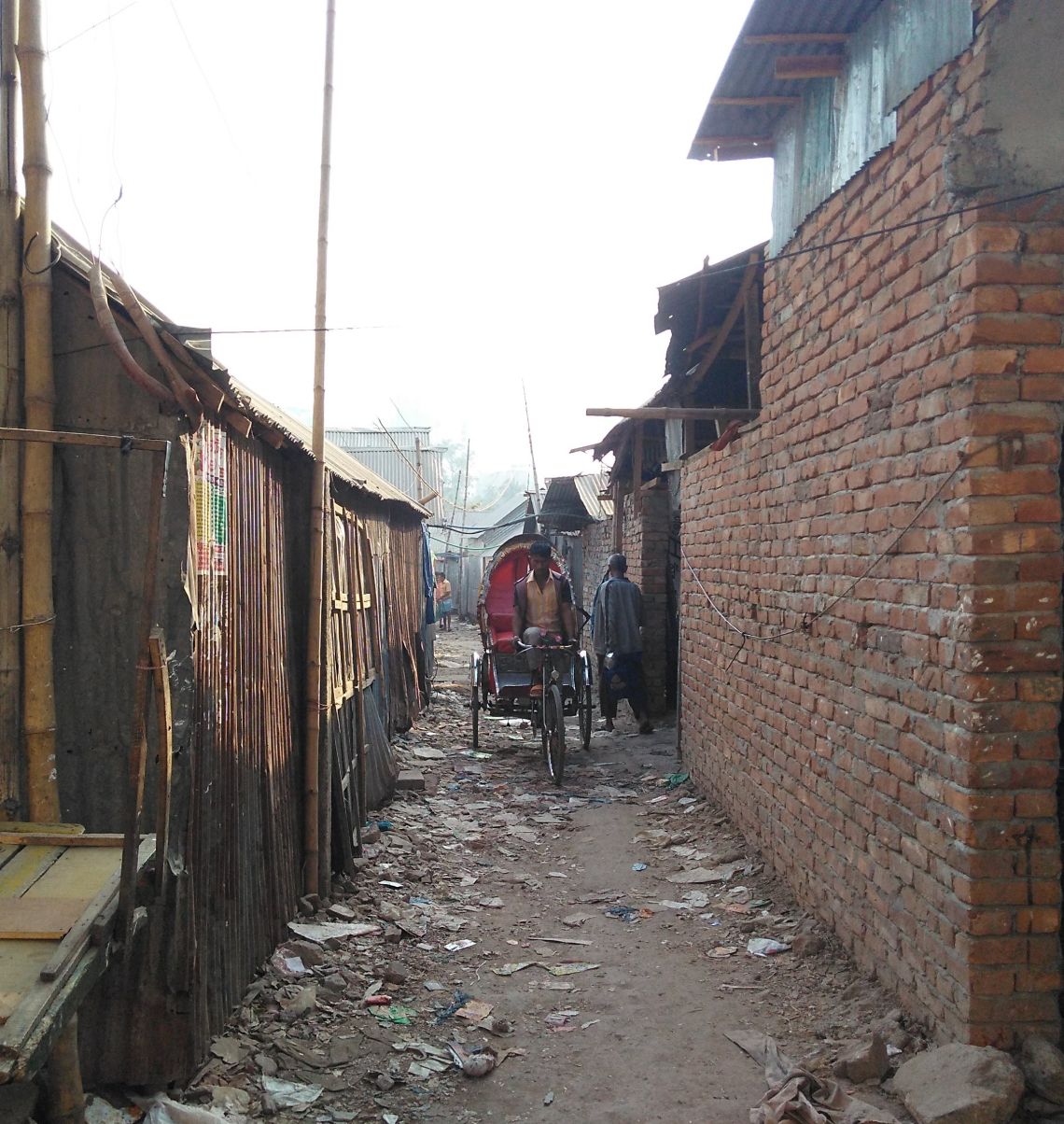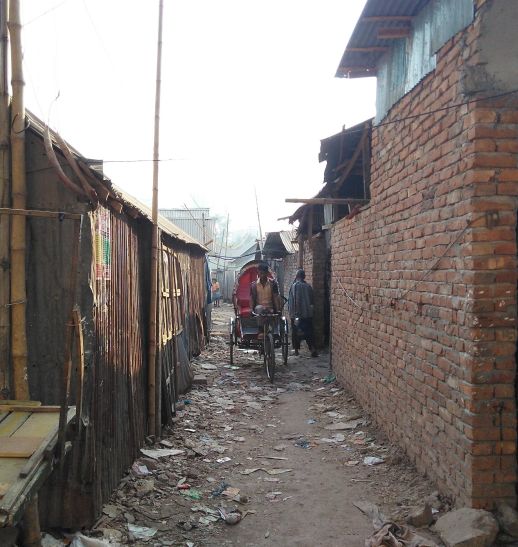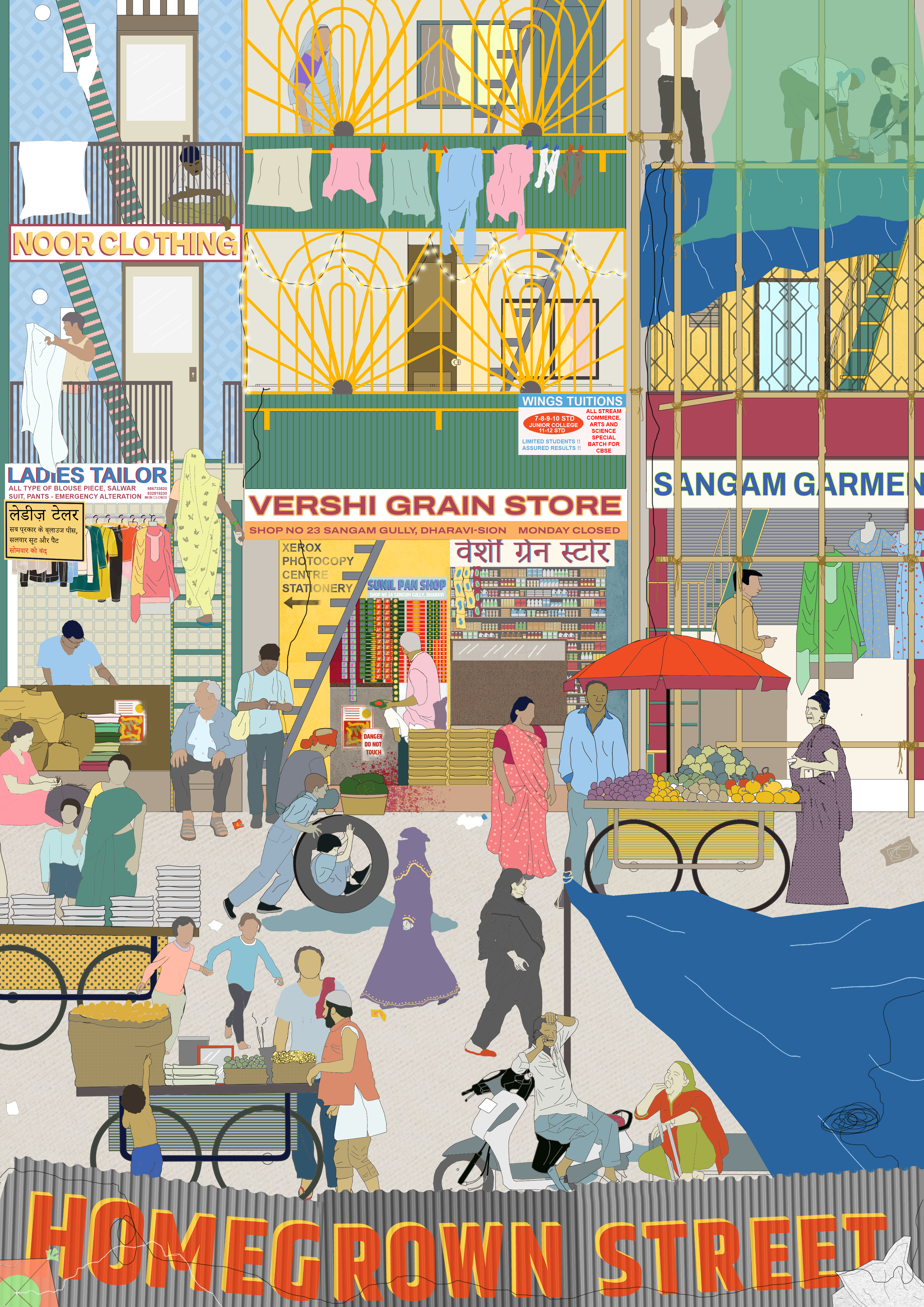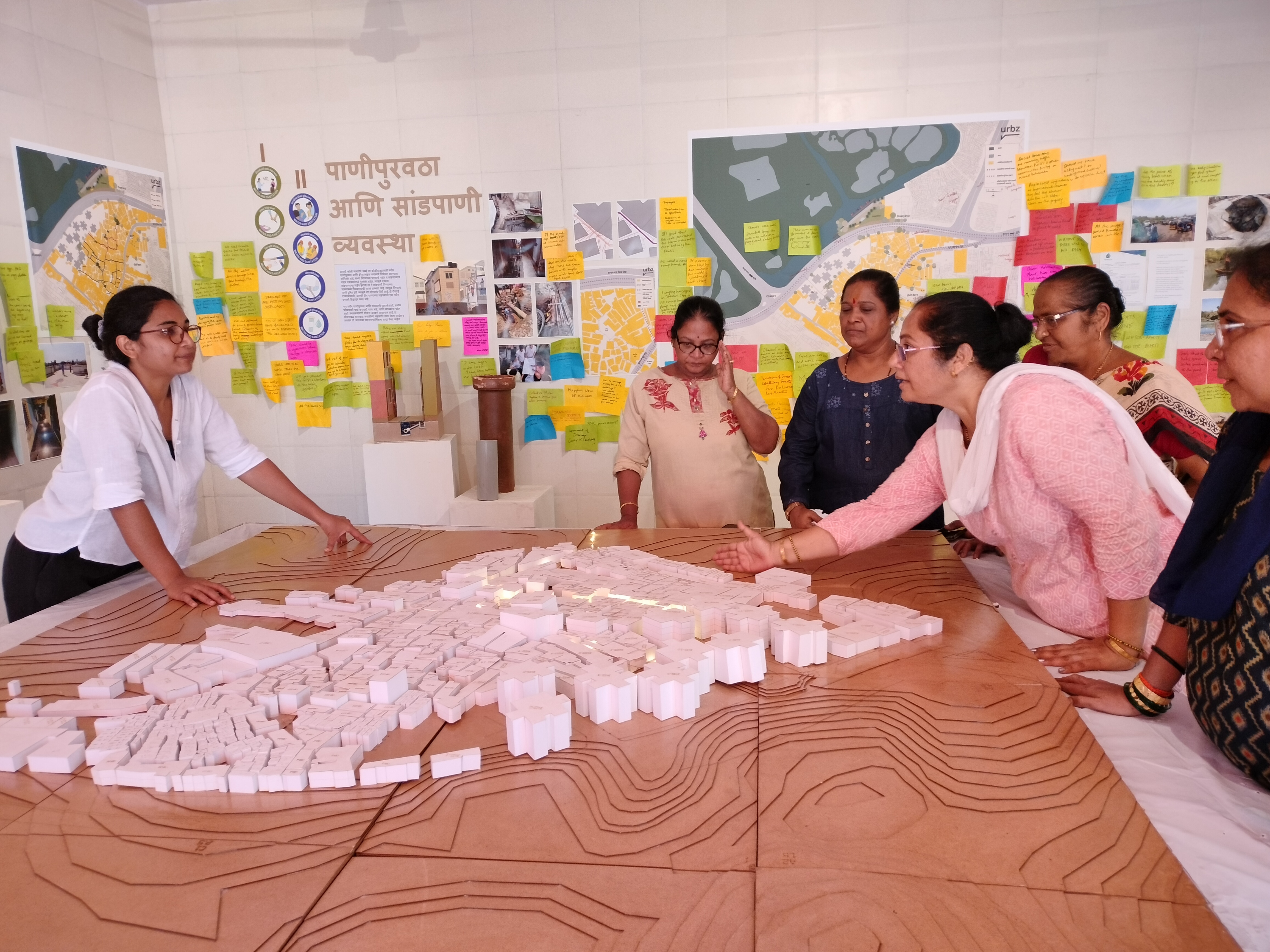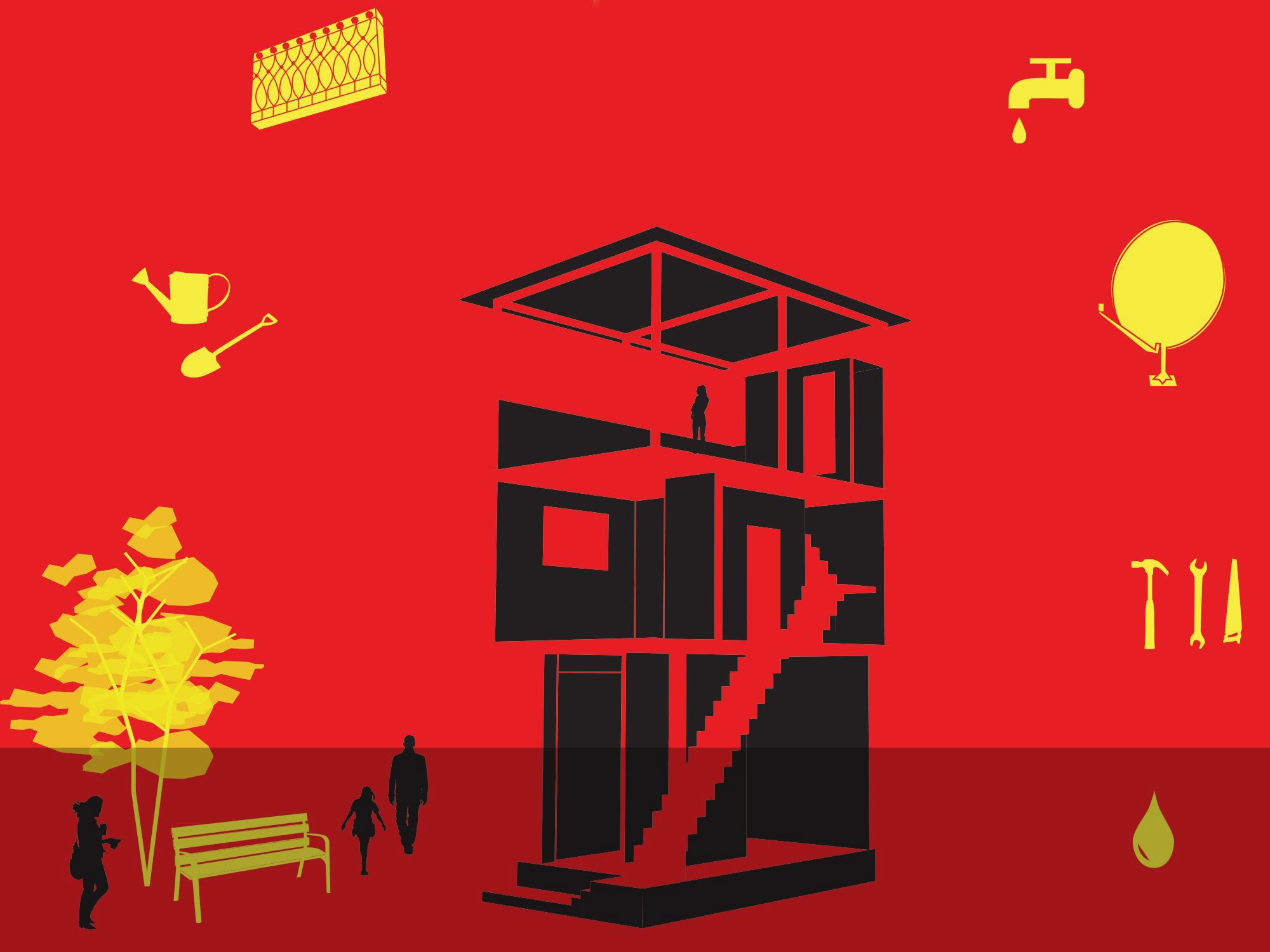Basti of Karail
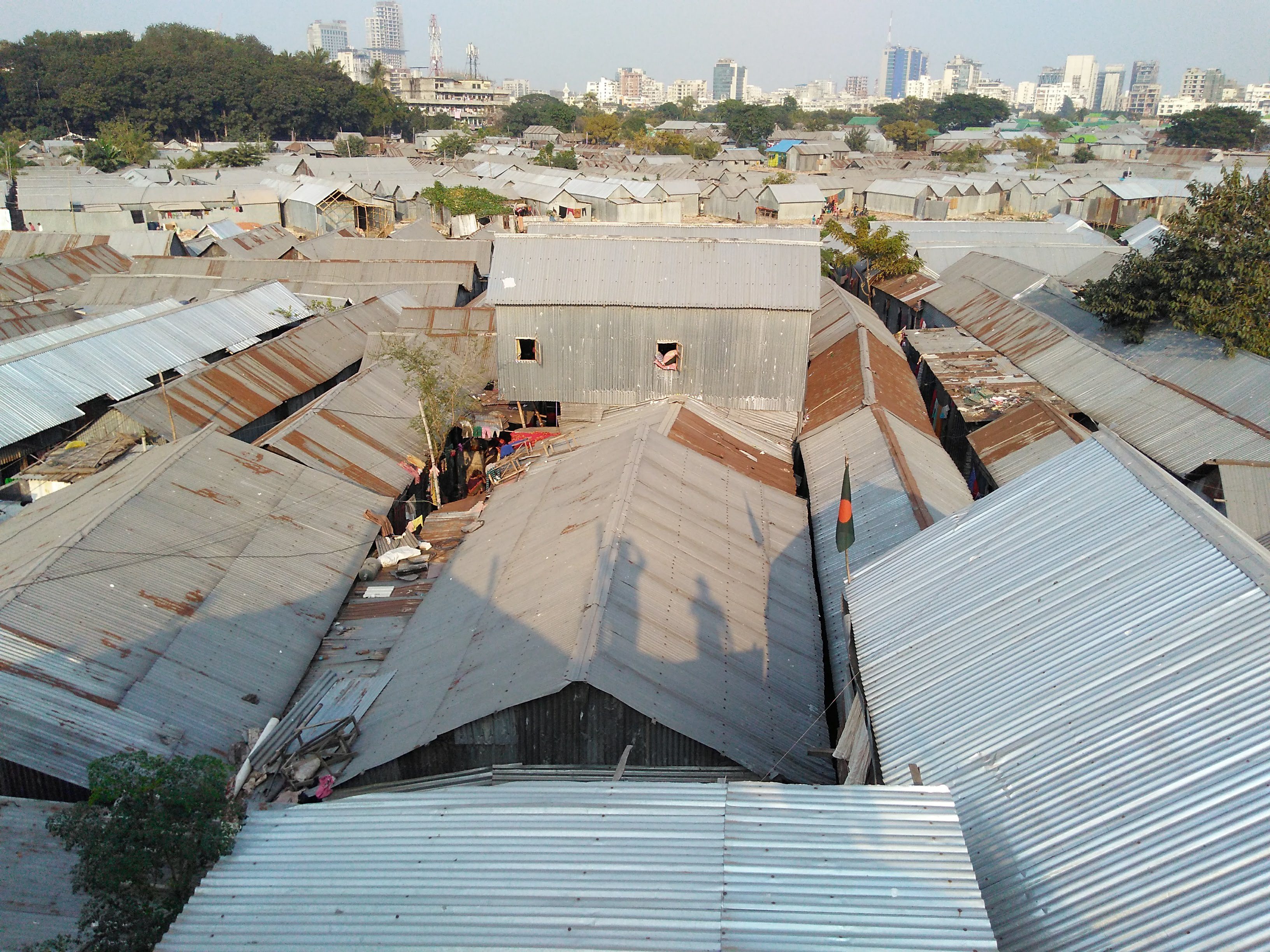
Basti of Karail
Several paths to reach Karail
The neighborhood of Karail is located on a peninsula surrounded by Banani lake. The densely packed corrugated tin roofs of Karail stand in contrast to the commercial high rises and residences in Gulshan at the other side of the water body. Karail covers an area of approximately 100 acres and is home to approximately 300,000 residents. To approach Karail from the east, a boat or a raft is required. Whereas from the west, the first thing you come across is a wall running along the length of the settlement until it reaches the lake.
The wall acts as a place of exchange, the gaps in it allow the residents access to Karail. While planned as a boundary to separate, the wall has now been adapted by the community, with vendors setting up shops lining the outside of the wall and claiming the street adjacent to it as a market. Karail is separated from the rest of Dhaka by a permeable, almost intangible membrane that allows goods, people, and values to flow freely.
Genesis of Karail
In the 1960s, the Bangladeshi government purchased approximately 90 hectares of land in Dhaka for the construction of telecommunication infrastructure. The site, which was primarily used for seasonal cropping, came to be of no use to the BTCL (Bangladesh Telecommunication Company Limited, then the Pakistan Telegraph and Telephone Department). Since the state failed to initiate the planned infrastructural development, the Ministry of Telecommunication then handed over 36 hectares of land to the Ministry of Housing and Public works. However, before the handover BTCL sold the trees on the property, clearing the forest unintentionally making it suitable for settling. Since the early 1990s, judicial disputes between the three parties (BTCL, PWD, and the local owners) meant that the property was essentially under a court injunction. As a result, commercial use of the land was ruled out. Migrants in search of affordable housing in Dhaka occupied this contested land. The settlement was densely established by 2001, leaving hardly any land for horizontal expansion.
Karail was initially located on a plateau and incrementally expanded to the low-lying areas and closer to the water’s edge due to an increase in demand for housing. If we observe the case of a 500 x 500 square meter neighborhood in Karail, we can see that the neighborhood’s coverage grows from 4.3 hectares in 2001 to 13.11 hectares in 2018. The settlement exhibits uneven growth, the northern neighborhoods produced much larger areas in a shorter period than the southern ones. Although Karail’s incremental expansion is evident to us, it’s important to observe the underlying mechanisms that have caused this growth.
Many domestic migrants choose to settle in Karail because of its central position, even though the cost of living is higher relative to that of other homegrown neighborhoods in Dhaka. Karail is one of the few places around the world where the residents have organized and developed their urbanism. Residents of Karail basti work as housemaids, drivers, rickshaw pullers, sellers, gatekeepers, and watchmen in the Gulshan area, and many even work in ready-made garment factories.
Although making and contributing to the whole basti, the residents remain true to their local origins: it’s common to see people belonging to specific districts live in the same area and build networks with one another. Despite this, different groups may share close-knit bonds owing to the ties between generations of families that have already lived there, and a shared sense of belonging to Karail basti. The inhabitants of bastis or self-organized settlements in Dhaka, also supported by NGOs, have learned to negotiate space and self-organize themselves to ensure basic infrastructures and their right to housing. Prominent residents are often involved in the allocation of unused and vacant land for newer inhabitants, as well as for the provision of utilities.
Assembling Karail
The increase in population and the threat of eviction drove the practice of landfilling in Karail. The portion of the lake within the settlement was filled up, while the site facing the Gulshan neighborhood had only minor expansions. The infill material is construction debris or waste collected by Karail residents who work in the construction industry. Over time the production of land is considerably more towards the north where the land preceded the buildings, in the south however the building was made on stilts and then the land was produced.
The housing units close to the water’s edge are mostly inhabited by migrants who move to Karail based on seasonal economic opportunities or new settlers who find housing through kinship ties or local village acquaintances. The houses are made on stilts and have a structural frame made of bamboo.
There are apartment-like homes in Karail that are made up of a cluster of single-room dwelling units (SRDUs), where each room houses a family. Multiple SRDUs share common facilities such as kitchens, toilets, and a common entrance hallway. These clusters can range in size from a single room to 50 rooms, but 8-unit clusters are the most common. The availability of resources, material constraints, and even the owner’s gender, all influence cluster size. The overarching element, however, is the social limit of sharing common facilities such as toilets, stove points, and wash areas. Throughout the neighborhood, a strict ratio of one toilet to eight rooms is observed.
The communal internal corridors of the clusters connect to the publicly accessible road network to create a permeable urban tissue. During the day, these communal corridors are kept open and serve as an extension of the public laneway, which is only available if you know the families in the cluster. As a result, in Karail, social capital becomes a defining factor for accessibility.
Other than commercial establishments and residences, Karail houses thousands of rickshaws and large-scale rickshaw garages towards the north of the settlement. Such garages are often the only function suitable for freshly infilled land, which is over time converted to housing as the land stabilizes. Karail has only one major public street connecting it to the rest of the city.
The streets within the settlement are made to accommodate two-way pedestrian traffic and in some cases rickshaws.
The incremental growth of Karail is accompanied by a trend towards a preference for permanent structures, which are typically associated with stronger tenure security. In most cases, newer construction technologies or materials are linked to the building practices in the migrant resident’s native place. For instance, the first two-story timber houses in Karail were built by migrant residents from the south of Bangladesh, where such construction is common. The timber construction has limited the urban form to two stories, preventing the settlement from becoming vertically dense. In Karail, non-governmental organizations have built a limited infrastructure of drains, latrines, and water points. The NGOs function as silent partners, providing microfinance loans for infrastructure and urban services, ranging from toilet blocks to schools and clinics, all of which contribute to making Karail more liveable.
Resilience
Over time Karail has developed peripheral edge-oriented commercial activity, which generates a lot of visits to the settlement. Most of the differentiation of functions has been a result of an adaptation of the typical 3-meter by 10-meter housing form into different functions such as schools. An exception to this is the construction of community institutions of the mosque and the bazaar, both built much larger and sturdier than the rest of the urban fabric. Both institutions are established through collective efforts and financial contributions of the community, they are important in the formation of a collective sense of the neighborhood.
In the aftermath of natural disasters and fires, even people who are left unaffected by the tragedy self-modified and altered the urban fabric. Such disasters often drive attitudes towards the adoption of more rigid materials. The flood of 1988 resulted in a transition from bamboo-mat to lintel-post constructions. The fire of 2004, resulted in the adoption of tin metal sheets as a building material and the fire of 2016-2017 resulted in a rapid transition to brick-and-mortar buildings, which also allow for vertical incremental growth.
Karail residents are constantly under threat of eviction to make way for the government's plans for an IT park and a lake beautification scheme. The fires have fueled speculations that these are state-sanctioned strategies to evict them. The people of Karail's everyday lives are shaped by this affective realm of uncertainty - whether to plan, build, or expand their house. The formation of Karail however is indicative of the desires and aspirations of its residents.
The residents of Karail have adapted many smaller scale spaces into active public spaces, while the larger public spaces are intentionally preserved by making them part of institutions such as schools or the mosque. The community and the social are created by the practices of social actors, and space plays an active role in these practices. In Karail, space is used in many different ways – access areas double as places to meet, and shop owners use their premises not only as retail areas but also as living rooms and meeting points. As a result, the spatial structure of Karail is inextricably linked to everyday life.
____________________________________________________
Image Credits: All images have been provided by Tanzil Shafique.
Acknowledgments: We would like to give special thanks to Tanzil Shafique for taking the time and effort to share with us his experiences, knowledge, and seminar about Karail. You can learn more about Karail’s morphogenesis and follow Tanzil’s work on informal urbanism and his open studio projects
